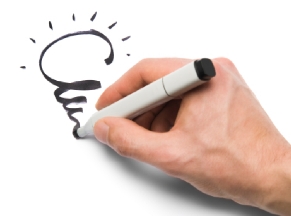 Innovation success begins with the right mindset. If you believe that your new idea or creation is an exception to the status quo, embrace its disruptive benefits. Think about how it can become standard for all of your customers. When the new concept proves to be better, its success pulls the ordinary performances up to be like the exception. Every customer-centric organization welcomes change that customers value. Innovation thrives in those cultures that are comfortable with making the exception the rule.
Innovation success begins with the right mindset. If you believe that your new idea or creation is an exception to the status quo, embrace its disruptive benefits. Think about how it can become standard for all of your customers. When the new concept proves to be better, its success pulls the ordinary performances up to be like the exception. Every customer-centric organization welcomes change that customers value. Innovation thrives in those cultures that are comfortable with making the exception the rule.
There are two ways to innovate:
Level 2 customer-centricity is built around incremental changes on behalf of customers. It represents designing logical improvements to what already exists. It might be thought of as inside-the-box (Rushkoff, Get Back in the Box) because it nudges the current state forward to become a better version of the product or process. It delivers higher value to the customer, but the customer is still carrying out the same action. For example, the E-ZPass RFID system pays drivers’ tolls for them electronically, reduces waiting times at toll booths, and produces a monthly statement of activity. Drivers are still paying their tolls, of course, but the process is more user-friendly.
Incremental change is fine. Most innovations, in fact, fall into this category because they are easier to envision. We can readily visualize the “what-if” results of a new feature being added to an existing product or service. Level 2 is built on the premise that every product or service has a potential that will be better in the future. The secret is the conviction that customers will value the change, even if they do not all choose to participate. Not all payers of tolls choose to use E-ZPass, for example, but the benefit for the ones who do sign up is worth it.
There is an even bigger way to develop new ideas by making the exception the rule. Level 3 customer-centricity represents breakthrough performance, creating concepts that did not exist before, rather than tweaking an existing product or service. It, therefore, has to be iconic; big ideas and deployment strategies are necessary. Alan Webber, in Rules of Thumb, tells a great story about Rosanne Haggerty’s approach to helping the chronic homeless in New York City. With a high-impact idea and some corporate financial help, her organization, Common Ground, renovated the Times Square Hotel into a model for change for hundreds of homeless New Yorkers and transformed the neighborhood. The effort proved that not only would the project work, but that a not-for-profit organization could help the homeless for one-third the expenses (per person) being spent at the time by city services.
The Common Ground prototype demonstrated to naysayers that the idea was doable, with a high chance of success. Webber writes, “The job of an iconic project is to make change believable.” The lesson is that big ideas can start with a demonstration model that proves the viability of a strategy. “Once people can see it, feel it, and benefit from it, then change isn’t an abstraction. It’s real.”
Innovation happens when organizations think like their customers. The decision to choose incremental change versus transformational change depends largely on the investment and degree of difficulty involved. But in both categories, the undertaking should be grounded in a belief that it’s okay to make the exception the rule. Organizations should constantly be looking for a better way to accomplish what they are doing. And it should always be based on the real-world needs of the customer.
